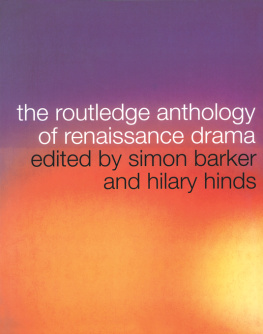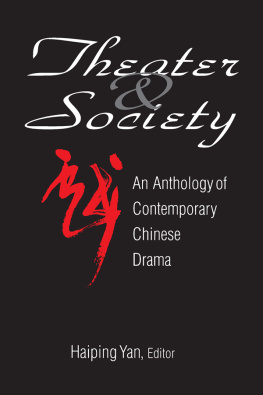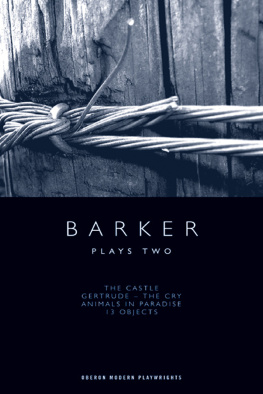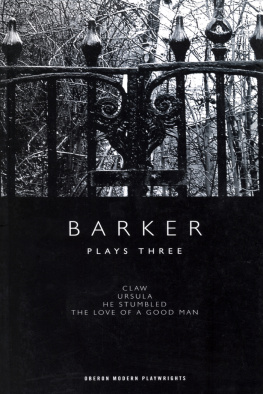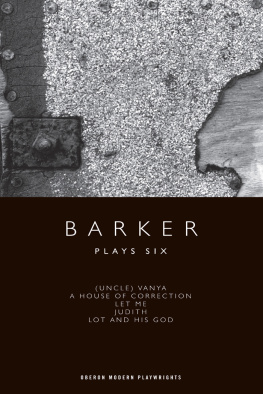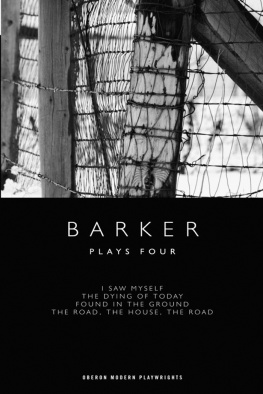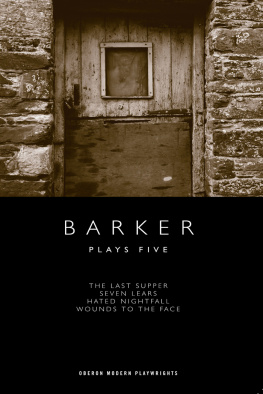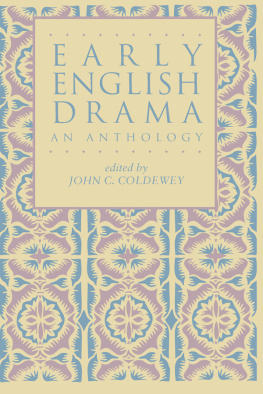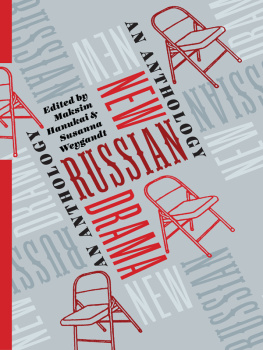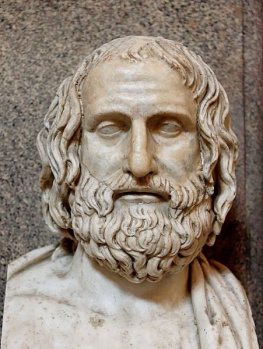Simon Barker - The Routledge Anthology of Renaissance Drama
Here you can read online Simon Barker - The Routledge Anthology of Renaissance Drama full text of the book (entire story) in english for free. Download pdf and epub, get meaning, cover and reviews about this ebook. City: London;Englisch, year: 2011, publisher: Routledge, genre: Religion. Description of the work, (preface) as well as reviews are available. Best literature library LitArk.com created for fans of good reading and offers a wide selection of genres:
Romance novel
Science fiction
Adventure
Detective
Science
History
Home and family
Prose
Art
Politics
Computer
Non-fiction
Religion
Business
Children
Humor
Choose a favorite category and find really read worthwhile books. Enjoy immersion in the world of imagination, feel the emotions of the characters or learn something new for yourself, make an fascinating discovery.
- Book:The Routledge Anthology of Renaissance Drama
- Author:
- Publisher:Routledge
- Genre:
- Year:2011
- City:London;Englisch
- Rating:3 / 5
- Favourites:Add to favourites
- Your mark:
- 60
- 1
- 2
- 3
- 4
- 5
The Routledge Anthology of Renaissance Drama: summary, description and annotation
We offer to read an annotation, description, summary or preface (depends on what the author of the book "The Routledge Anthology of Renaissance Drama" wrote himself). If you haven't found the necessary information about the book — write in the comments, we will try to find it.
The Routledge Anthology of Renaissance Drama — read online for free the complete book (whole text) full work
Below is the text of the book, divided by pages. System saving the place of the last page read, allows you to conveniently read the book "The Routledge Anthology of Renaissance Drama" online for free, without having to search again every time where you left off. Put a bookmark, and you can go to the page where you finished reading at any time.
Font size:
Interval:
Bookmark:
By around 1604, there was a playhouse of some kind within two miles of nearly every Londoner, and playgoing enjoyed such popularity that traffic jams often blocked the streets around the theatres. Indeed, a petition of 1619 complained about the problems this caused: There is daylie such resort of people, and such multitudes of Coaches (whereof many are Hackney Coaches, bringinge people of all sortes) that sometymes all our streetes cannott containe them And the inhabitantes there cannott come to their howses, nor bringe in their necessary provisions of beere, wood, coale or haye, nor the Tradesmen or shopkeepers utter their wares, nor the passenger goe to the common water staires without danger of their lives and lymmes. (Bentley 1941-68, vol. 1: 4-5) The exasperation of the writer on behalf of those living and working in the vicinity of the theatres is clear: the crush of theatre-goers was impeding not only peoples access to their houses and to the river (one of the main city thoroughfares) but also interfering with peoples livelihoods by hindering trade in the neighbourhood. The account is important too, however, for the way it indicates that playgoing was widespread amongst people of all sortes, all ranks of society not only the apprentices who paid a penny to stand in the pit at the public theatres or the law students from the Inns of Court, but also those Londoners wealthy enough to own their own coaches. Such detailed accounts combine with the statistics about theatre-building to demonstrate the extraordinary popularity of playgoing at the end of the sixteenth century and in the early decades of the seventeenth century.
There was indeed a fashion of play-making, as Thomas Middleton put it in his preface to The Roaring Girl (1611). Although various forms of theatrical entertainment, usually involving religious celebration or instruction, had been important features of the cultural landscape in Europe and beyond for centuries, the rapid expansion of Londons purpose-built commercial theatres during the Renaissance was an entirely new phenomenon. The question of how we can account for this expansion continues to fascinate students of this period. We cannot hope fully to account for these changes in a short introduction, but we do wish to point to some of the issues which are debated, often fiercely, to do with the social, economic, political and cultural circumstances which combined to precipitate this expansion in theatrical production, and the ways in which these circumstances are manifested in the plays themselves. Perhaps the best way to begin to address these questions is to return to the location of these theatres: London itself. What changes had taken place in the capital city that enabled it to produce and sustain so many new theatres and new plays over a period of some fifty years?
Although most people continued to live and work in agricultural communities, towns and cities were nonetheless expanding rapidly and becoming increasingly powerful. This expansion was the result of a number of factors: the development of early forms of manufacturing and trade, an increase in the overall population of the country (doubling from 2.5 million in the 1520s to around 5 million in 1600), and the continuing process of the enclosure of land into larger, privately owned, units of production. Philip Stubbes, writing in The Anatomie of Abuses (1583), explained that: They take in, and inclose commons, moores, heaths, and other common pastures, wher out the poore commonalitie were wont to have all their forage and feeding for their cattell, & (which is more) corne for them selves to lyve uppon For these inclosures be the causes, why rich men, eat up poore men, as beasts do eat grass. (Stubbes 1973: n.p.) Historians debate the extent and effect of this process during the reign of Elizabeth I (1558-1603) but most note the considerable unrest such dispossession caused, especially in times of poor harvest and the accompanying migration to the towns. Early industrial activity, often benefiting from the skills of Protestant immigrants from The Netherlands and France, also drew people from the countryside to the towns in search of wages and the perceived benefits of urban life. The population of London itself was most affected and the city grew to be one of the largest in Europe.
The 200,000 people who lived in London in 1600 represented a doubling of the citys population since 1580, and it was to double again, to 400,000, by 1650. One effect of this increase was to create a large audience for the expanding network of theatres. Many of the people who attended these theatres had a memory of the traditions and cycles of activity in the countryside, as well as a new consciousness of the rigours and, indeed, the dangers of urban life. Many Londoners retained a connection with the countryside through the citys agricultural markets, but London was also rapidly becoming the focus for a new kind of commercial activity which had an increasingly international dimension. For more people than ever before, there emerged an awareness of the nation in relation to the rest of Europe, as well as to the expanding world itself, as news circulated of the settlements made in the territories of the new worlds beyond Europe. The period of history during which the plays in this volume were written was one of increasing exploration and the first tentative planting (of people) overseas.
Englands only real colony (and most successful plantation of Protestantism) was Ireland. However, whatever the practical successes and failures of these activities, the impulse towards the settlement of overseas territories can be glimpsed surprisingly early in the sixteenth century. Trade links to the east of Europe (and particularly with Turkey through the Levant Company) opened up possibilities of further links as far as India and China. Some of this business involved the establishment of small groups of traders abroad. The lands across the Atlantic to the west, however, gave rise to the possibility of an entirely different form of activity. The idea arose in the 1560s that a stabling place could be set up in North America through which local raw materials could be exchanged for English cloth.
Indeed, in 1582 Humphrey Gilbert declared English sovereignty over Newfoundland but the project failed, as did the idea of a New Albion in what is now California and early plantations in Virginia during 1584 and 1587. It was not until the 1620s that more successful settlements were established, yet this earlier expansion, together with associated tensions in international affairs, particularly with Spain, had made an enlarged concept of the world available for a great number of people. However, there were insecurities about the development of a non-agrarian structure of employment and in the new awareness of the world which it had helped to deliver, and these tensions are revealed in the dramatic writing of the period. Whilst many of these plays, such as A Woman Killed with Kindness (1603), are located in the claustrophobic settings of English (or foreign) country estates, an increasing number, such as The Knight of the Burning Pestle (1607), Epicoene, or The Silent Woman (1609) and The Roaring Girl , established the importance of towns and cities as places recognisable as images of the structure and pattern of everyday life for the theatre audience. Even where town life was represented in European settings ( The Changeling (1622) is set in Spain, for example, and Tis Pity Shes a Whore (1633) in Italy), there would have been a keen sense of identification for London audiences intrigued by the potential for comparison between these imagined overseas locations and their own expanding city. Moreover, a strong element throughout the drama of the seventeenth century is the perceived clash between the ways of the country and the ways of the town.
Font size:
Interval:
Bookmark:
Similar books «The Routledge Anthology of Renaissance Drama»
Look at similar books to The Routledge Anthology of Renaissance Drama. We have selected literature similar in name and meaning in the hope of providing readers with more options to find new, interesting, not yet read works.
Discussion, reviews of the book The Routledge Anthology of Renaissance Drama and just readers' own opinions. Leave your comments, write what you think about the work, its meaning or the main characters. Specify what exactly you liked and what you didn't like, and why you think so.

